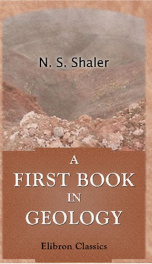the interpretation of nature

Purchase of this book includes free trial access to www.million-books.com where you can read more than a million books for free. This is an OCR edition with typos. Excerpt from book: CHANGES OF TEMPERATURE. 59 field where materials are affected by temperature. Perhaps the most familiar of these actions are found in the cases in which matter passes from the state of a gas, first into the liquid and then into the solid form. In this series of changes the molecules or atoms are held apart and maintained in the gaseous state by the action of heat. By progressive cooling, due to the escape of the energy, the mass assumes the fluid form. A yet further loss reduces it to the solid condition. Each of these transitions, though brought about by a progressive and undiscrimina- tive series of changes, is usually accomplished in a sudden manner. The passages from the gaseous to the fluid or from the fluid to the solid state are, speaking generally, immediate, though the changes of temperature which lead to them are absolutely continuous. A very striking instance of this action is seen in the case of water when that substance is affected by variations in heat. Withinthe limit of temperatures which may be readily observed on the surface of the earth, water or its components exist in several diverse conditions. With a certain high temperature, the elements which compose water are disassociated and exist as two very diverse gases, neither of which has any trace of the physical properties of the fluid which is formed by their union. With a lower temperature, together with certain influences which may serve to bring about a chemical union of the elements, the oxygen and hydrogen enter into relations with each other, producing water. Given a sufficiently high temperature, the conjoined elements may continue in the state of vapor. At a certain lower temperature we perceive that the vapor is suddenly converted into a liquid. Each of these changes occurs suddenly and is revolutio...
Info about the book
Author:
Series:
Unknown
ISBN:
1461072387
Rating:
4.5/5 (4)Your rating:
0/5
Languge:
English
Users who have this book
Users who want this book
What readers are saying
What do you think? Write your own comment on this book!
write a commentif you like the interpretation of nature try:
Do you want to exchange books? It’s EASY!
Get registered and find other users who want to give their favourite books to good hands!










